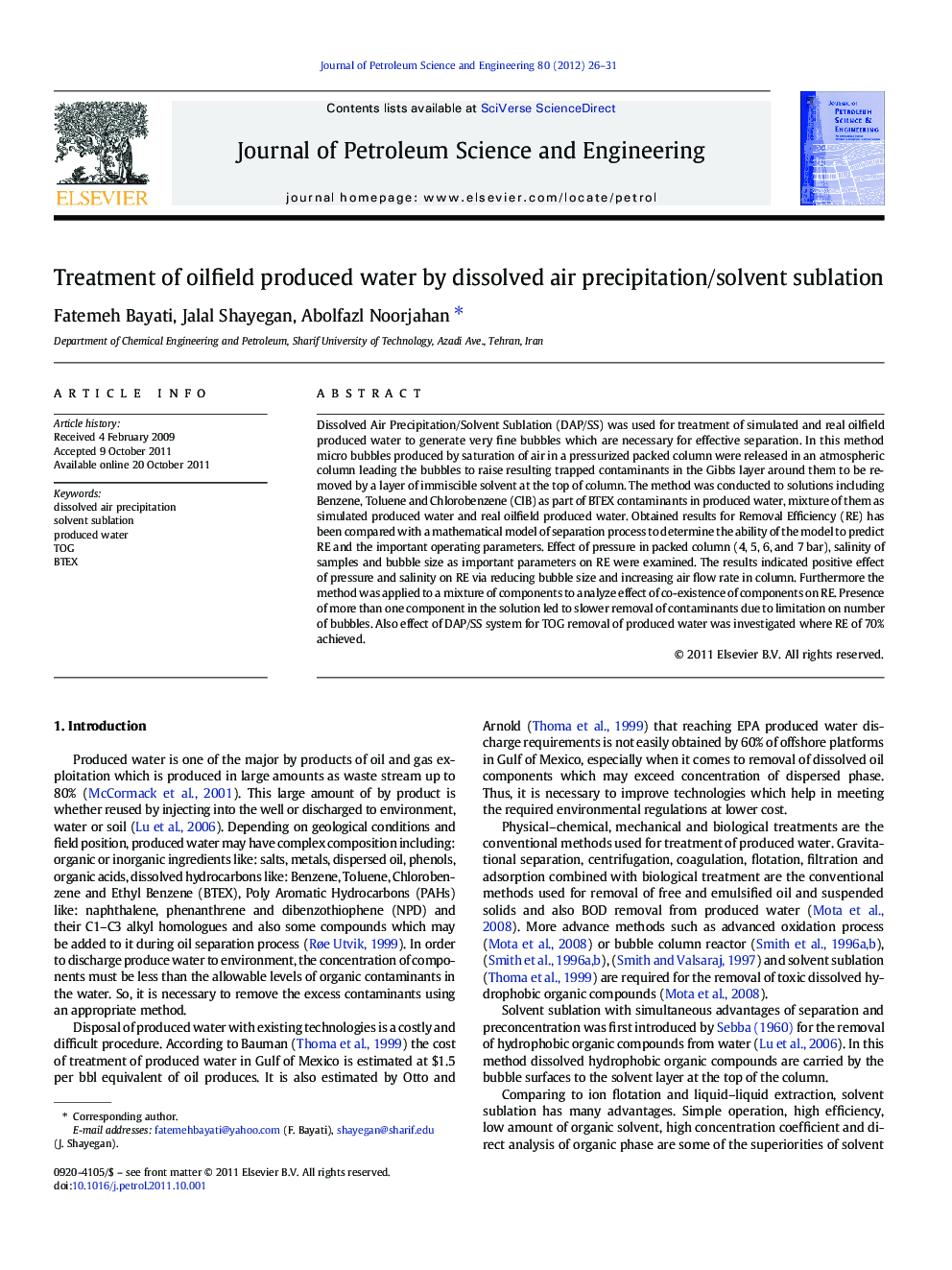| Article ID | Journal | Published Year | Pages | File Type |
|---|---|---|---|---|
| 1755563 | Journal of Petroleum Science and Engineering | 2011 | 6 Pages |
Dissolved Air Precipitation/Solvent Sublation (DAP/SS) was used for treatment of simulated and real oilfield produced water to generate very fine bubbles which are necessary for effective separation. In this method micro bubbles produced by saturation of air in a pressurized packed column were released in an atmospheric column leading the bubbles to raise resulting trapped contaminants in the Gibbs layer around them to be removed by a layer of immiscible solvent at the top of column. The method was conducted to solutions including Benzene, Toluene and Chlorobenzene (ClB) as part of BTEX contaminants in produced water, mixture of them as simulated produced water and real oilfield produced water. Obtained results for Removal Efficiency (RE) has been compared with a mathematical model of separation process to determine the ability of the model to predict RE and the important operating parameters. Effect of pressure in packed column (4, 5, 6, and 7 bar), salinity of samples and bubble size as important parameters on RE were examined. The results indicated positive effect of pressure and salinity on RE via reducing bubble size and increasing air flow rate in column. Furthermore the method was applied to a mixture of components to analyze effect of co-existence of components on RE. Presence of more than one component in the solution led to slower removal of contaminants due to limitation on number of bubbles. Also effect of DAP/SS system for TOG removal of produced water was investigated where RE of 70% achieved.
► Dissolved Air Precipitation/Solvent Sublation was used for treatment of produced water. ► Effects of pressure, salinity and bubble size on removal efficiency were examined. ► The process was effective in removal of dissolved aliphatic and aromatics. ► It was also effective in the simultaneous removal of a microdisperse Decane phase. ► Efficiency of 70 % was obtained for TOG removal from produced water.
